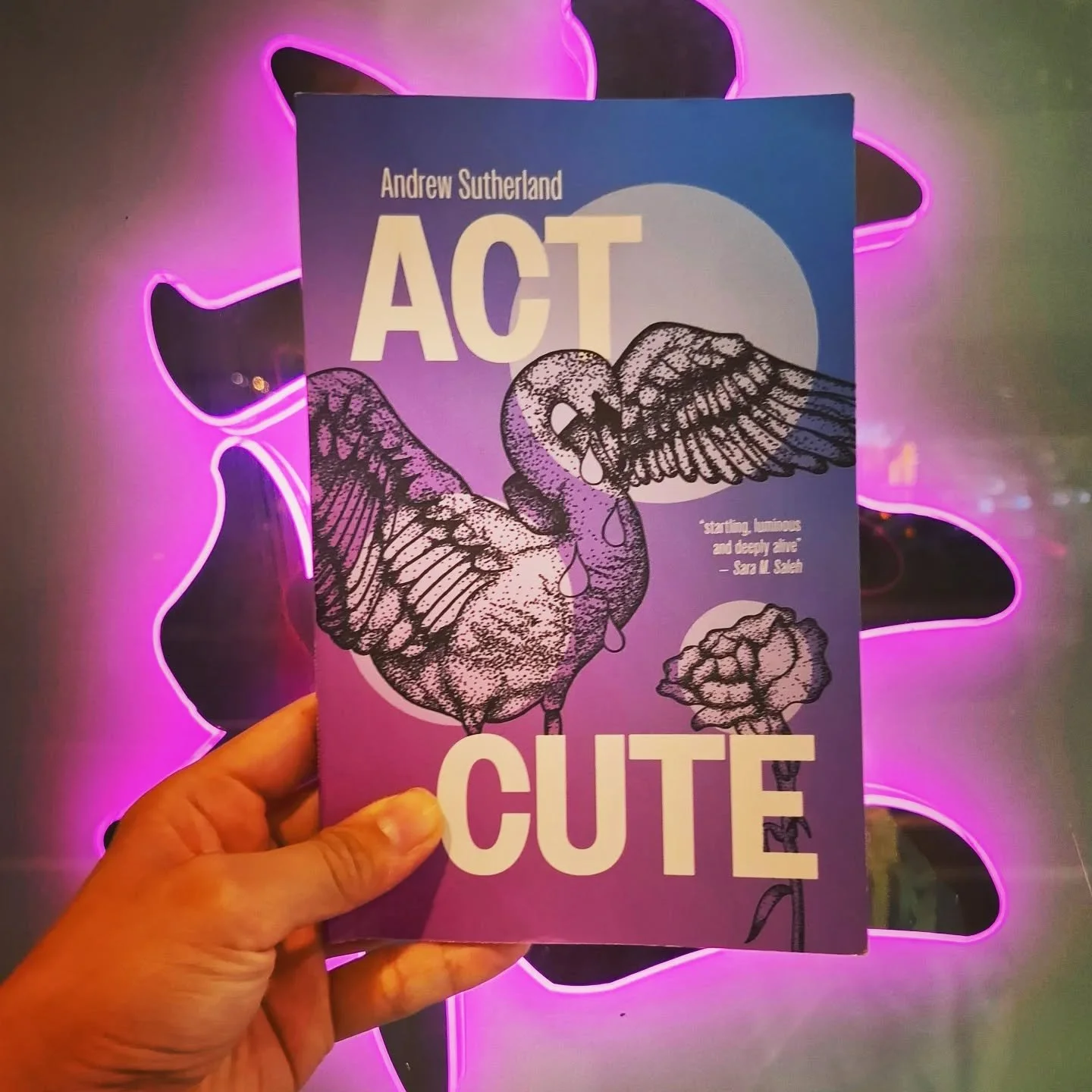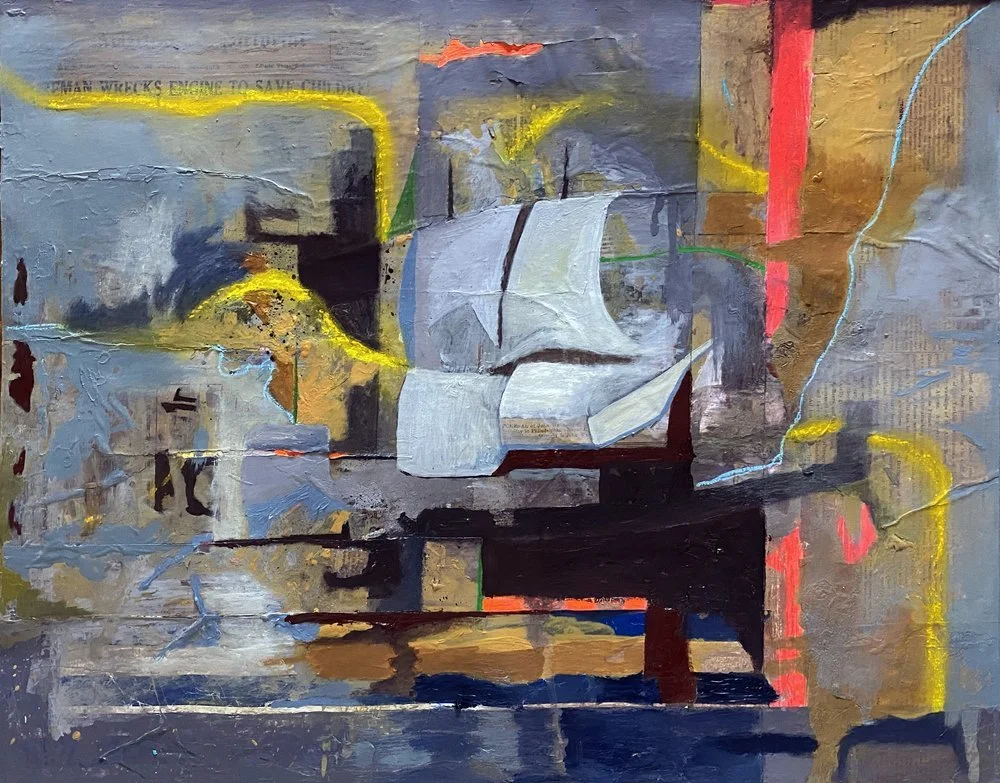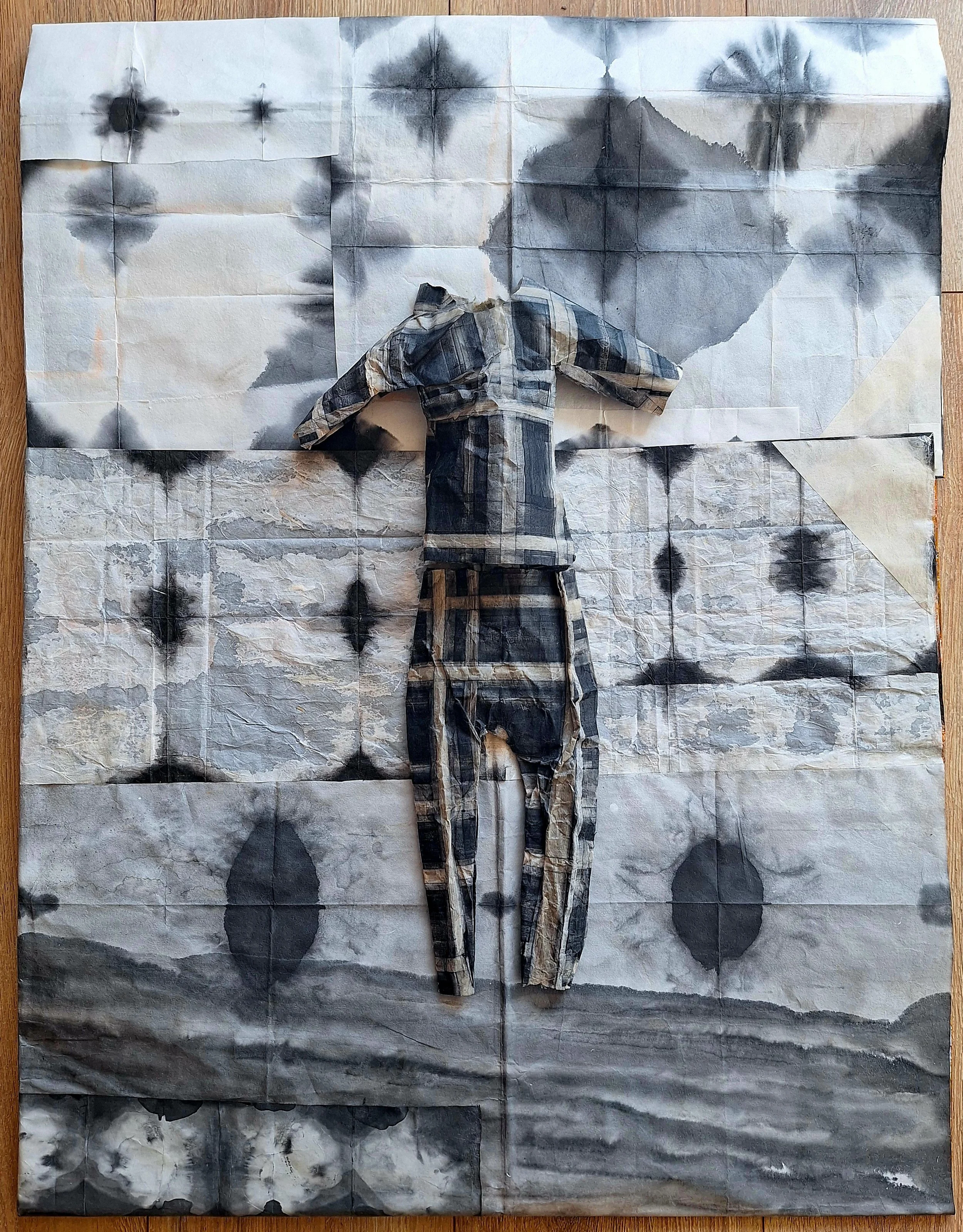For the Love of Squircles
By Yap Hao Yang
Review of The International Left-Hand Calligraphy Association, by Tse Hao Guang (USA: Tinfish Press, 2023)
I first encountered Tse Hao Guang’s work in 2020 when I picked up Deeds of Light (Math Paper Press, 2015) from my neighbourhood library. The writing charmed me, but it was only after reading The International Left-Hand Calligraphy Association that I realised the secret behind Tse’s poetry: an attitude of delight complemented by an analytical yet imaginative gaze. Like Deeds, TILHCA searches for beauty in our lives, driven by a playful delight in the world and conducted with a keen scrutiny into the minutiae of the everyday.
The opening poems of both Deeds and TILHCA are fascinated by visible light.
In TILHCA, the lines of verse look like solid ‘herd[s] of leaves’ that sunlight ‘thread[s] through’. TILHCA is thus light — both in terms of its brevity and radiance.
From the Latin delectare (‘to charm’), the French coined delit, and the English, associating delit with ‘light’, then added -gh- to form delight. This delight, this love of light, is best captured in the title of the poem ‘like children we are always gazing out of windows!’. Childlike wonder also underpins the abundance of pastoral imagery (‘sun / dress’, ‘starfruit juice’, ‘breaths of wind’, ‘warmth of sun’, ‘quivering tree’, ‘cow grass’). Here is a speaker who revels in the glories of being alive. Take the poem ‘this morning I woke up w/ a quick laugh like the sun’, for example. At first ‘closely / aligned to laughter & / at three removes / from the moon’, then later ‘at / a hundred removes / from dust & fully aligned / to skin’, the speaker experiences a rejuvenating transformation.
What this delight achieves for Tse’s poetics is to accord every lived moment with utmost attention so as to extract beauty that would otherwise go unnoticed. Just so, in the opening poem, the persona is ‘move[d] to wirework’ after observing ‘sunlight on dragonfly / wing’. The persona brims with delight — he is open to suggestion and to experiencing life in all its immediacy and subjectivity.
Throughout the collection, we meet several characters, but they remain enigmas: who is the oddly-named Bee Wing who is ‘in like’ with John? And who is the naive and jittery Cassandra who shouts, ‘THE WORLD WILL NEVER END [on a] roundabout’? Only the persona knows. Yet, he does not bother explaining the world he inhabits to an audience — he simply relays, with startling immediacy whatever he experiences and observes.
With a few formatting techniques, Tse further enhances that immediacy. In ‘beauty always promises, but never gives anything’, negative spaces recreate the entrancing effects of infatuation as experienced personally:
By spreading out lines and breaking up words, time (and the pace of reading) is similarly stretched in defiance of the ordered regularity of the quotidian. We are invited, thus, to revel drunkenly in the phenomenon of infatuation.
Towards the end of TILHCA, Tse introduces another formatting trick: the strikethrough. In ‘a day on Venus is longer than a year on Venus’, Tse draws lines that streak across the page from left to right:
Visually, the lines remind me of contrails—or are they clouds? In the context of the poem, the lines help paint a vivid image of the persona (the isolated ‘& I’ and ‘I see you’) being swept off his feet, his head lost in the clouds, literally blown away by his lover’s beauty.
Tse further foregrounds the persona’s subjectivity by eliding words or jumbling up lines, both of which make meaning less immediately accessible to the reader. For example, from ‘not the mirror image but the reverse side of the mirror’:
What does ‘where once would / ship or letter now I who // am cultured VPN / especially 7 // day free trial’ mean? Would what? Am I cultured VPN? Or am I just cultured? Meaning here is deliberately obscured, known in its entirety only to the poet/persona. Likewise, in ‘to enter a life not mine, to leap a wide, deep, swift river’, I found myself having to rearrange the order of the words to arrive at a coherent sentence:
Does the persona mean ‘what kind of person will’ instead of ‘kind of / person what will’? Anyway, who knows — maybe that is just how the persona’s internal monologue works.
For the reader, the world of TILHCA might seem strange and confusing, yet this is an obstacle only if the reader approaches the text with the intention of making meaning through academic close-reading. For me, the pieces in TILHCA are meant to be felt first and foremost. After all, isn’t that how we experience everyday life?
TILHCA is interested in trivialities and frivolities. From ‘dragonfly wing[s]’ and ‘chain / mail’ to ‘each [precise] individual hex’ and ‘lunula’ (the ‘white moon at base / of the nail’), the persona is fascinated by and pays scrupulous attention to little things that tend to be overlooked in favour of the larger picture. For example, Tse extracts phrases from their source material, focusing on the part instead of the whole. Collecting ‘layers of chatter / ash from above’, the poet/persona delightedly quotes lines from other texts (‘crimes flat like dreams / on both sides’, ‘pebble in the pocket / fly in the ear’); in fact, he even cheekily paraphrases a line from Deeds of Light (‘wasted time mister / takes more time / to distil’) itself!
Besides phrases read or overheard, the poems are also more concerned with intriguing singular images (‘heart-shaped potato’, ‘a crack / in the patella / of the earth’) than with grand themes or insights; the poem in which the ‘heart-shaped potato’ appears is titled ‘dumpster diving, newspaper wraps, sex, smoke bombs’, itself a listing of disparate items rather than a cogent whole. Indeed, the poems’ titles do not reveal or point towards any central idea — they shun explanation; they do not take themselves too seriously. This casual style of writing also sees Tse avoiding capitalisation altogether (except for ‘I’) and using shorthands like ‘w/’ and ‘w/o’.
TILHCA also probes the tension between surface and depth, the reconciling of which offers a richer way of seeing and experiencing reality. The collection opens with an ekphrastic piece written in response to Ruth Asawa’s wire sculptures and ends with a meditative piece that is partly about making art (‘the goal essence / not likeness’). In European art, the Impressionists and their modernist successors sought to represent objective phenomena as they were subjectively experienced—thus Monet’s attempts at capturing the effects of shifting light—with the paradoxical goal of creating more truthful representations. Similarly, in his response to Asawa’s wire sculptures, Tse does not seek to literally recreate them as seen — for example, by shaping the poems like one of the sculptures — but rather to recreate them as felt and experienced, which he does by capturing their ethereal qualities. Both the ‘dragonfly wing’ and ‘jelly / fish’ have thin, translucent surfaces that also, simultaneously, are their very materiality.
This quest for essence also informs Tse’s inventive translations of An Qi, a contemporary Chinese poet. Reading the original Chinese poems, I was surprised by how different they were from Tse’s translations. In An Qi’s ‘this moment’, the ‘17th floor…’ lines are rendered horizontally instead of vertically, which lends the poem less dynamism than Tse’s translation. In ‘so & so’s terrace’, Tse takes the creative liberty to reconstruct the equation ‘某+某某=某某某’ into a visual representation, possibly because the direct English translation ‘so & + so & so…’ would look too cluttered:
And in ‘hands part when day is not yet light’, Tse amplifies the frantic energy in An Qi’s verse (‘你来了你走了来来走走走来了又走了’) by fracturing his version with slashes and strikethroughs:
Here, formatting vividly expresses the persona’s inner turmoil, torn between longing and disappointment, indulgence and repression. Just as the lines are cancelled but not deleted, the yearning remains, and the tallying continues. In Tse’s translations, he captures essence without exact likeness, realises depth by reshaping the surface.
The use of strikethroughs in the final poems also foregrounds the flat surface of the page, as opposed to the depth that the words and the language are supposed to allude to. In the penultimate poem, ‘Cassandra, cobwebs are spun back and forth in the sky’, it was not the conjured image of cobwebs that stood out to me, but rather the web-like strikethroughs that Tse had employed over the past few pages. I remembered the fact that all I was looking at was just ink, a layer of words beneath a layer of strikethrough. Tse expresses the profoundly iterative nature of writing not with a few words, but rather through a clever play with the surface of the page.
TILHCA details the present as it unfolds. It is in the here and now. This is most manifest in ‘this moment’, a translation of a poem by An Qi. Negative spaces between ‘17th floor’, ‘16th floor’, and ‘5th floor’ fill the space with light (the page is white, after all), and Tse fills this vertical continuum of space-time with vignettes from the present. The resulting vision is panoramic — a continuous, top-down view from ‘roof / tops’ to ‘treetops’ to ‘a clean / public bus’ to ‘children’s tiny feet’. Indeed, the enjambed writing style throughout the collection and the relative absence of punctuation and capitalisation makes the collection feel like one long breath. The downside to this is that you remember only individual images or lines. There are no standout poems, since the poems are not standalone units, each with a certain theme or form. As with a scroll of ink painting, the beauty lies either in the technique of individual brushstrokes or in the vision of the overall landscape; Tse’s book is not a triptych, where each third holds its own.
Surrealism permeates the imagery in TILHCA: ‘and moths: / are cherries’, ‘tumorous pink / crystal / on a / space adventure’, ‘one moment soap / bubbles the next teacups’. This reaches its most hallucinatory manifestation in ‘repeated errors in the survey form are intentional’. In that poem, an enigmatic character named Mr. Mohamed appears to have a tenuous grip on reality (‘darting like eyes’) and haphazardly shuffles through images of ‘fish’, his ‘five grand / children’, ‘marbles’ and ‘fish / eye fingers’ that ‘float in the sink’. The poet does not clarify things either; instead, he destabilises the binary of being ‘journalistic’ or ‘metaphorical’, of fact or fancy. At first introducing Mr. Mohamed as a resident of Mandarin Gardens, the poet then reveals that the condominium is ‘metaphorical’, though we are to believe him when he says the marbles are ‘journalistic’. As readers, we can only suspend disbelief and be open to contradictions if we are to accept the surreal images presented to us.
Similar incongruities run throughout the collection. Even its title — which is the name of a real organisation in Singapore—belies a tension between tradition and modernity, between the Chinese and English languages. Writing with one’s left hand has traditionally been avoided in Chinese calligraphy but modern ideals of inclusivity and novelty have helped popularise the practice. And isn’t there something paradoxical about how Tse is writing in English about the art of writing in Chinese? This contradiction is especially stark in the collection’s second section, which abounds with references to classical and contemporary Chinese culture (‘bring the scriptures to the West’, ‘Feet were bound’, ‘is Chinatown your burden?’). Here, the English-writing poet/persona seems to peer into China through the looking glass with wide-eyed wonder; for instance, he pokes fun at imitation brands in ‘Adidos drops a new line’ and ‘timeless Rulex w/o hands’. Both names have a strange appeal — they are neither this nor that, but ambiguous and half-formed; they are chimeras.
Such halfness and liminality also mirrors the poet/persona’s diasporic perspective; he is acquainted with Chinese culture due to his heritage and yet only knows it like an outsider, a scholar. When referring to proper names in Chinese, the poet translates them to English as literally as possible (‘God / of Cooking… Saint of Gambling… Tricks Expert’), resulting in terms that are as distant from the Chinese originals as they are from their best English equivalents (‘God of Cooking’ likely refers to 厨神, which means ‘culinary master’). In a landscape largely devoid of capitalisation, these capital letters stand out like a sore thumb, further reinforcing their absurdity when translated to English.
Scrupulous yet imaginative, whimsical yet aesthetically coherent, TILHCA is a genre-defying, binary-straddling collection. Take, as a final example, the poem ‘beauty always promises, but never gives anything’: ‘stair / wells are angular your / eyes are round / & mid / night blue table / w/ stark square // of chess? is both’. The brevity of the revelation has me hypnotised. How enchanting the squircle.
Yap Hao Yang (he/him) is a dilettante. He writes poetry and occasionally prose, in English and occasionally in Chinese. He is also the founder of sploosh!, a youth-led Singaporean arts organisation. In his spare time, he leads art walks with OH! Open House, draws or paints, reads Norwegian books, and vibes to Nicki Minaj. He is still growing into his art.
If you’ve enjoyed reading this article, please consider making a donation. Your donation goes towards paying our contributors and a modest stipend to our editors. Singapore Unbound is powered by volunteers, and we depend on individual supporters. To maintain our independence, we do not seek or accept direct funding from any government.

















Ashley Marilynne Wong reviews Ling Ling Huang’s Immaculate Conception.